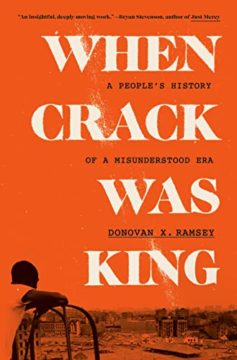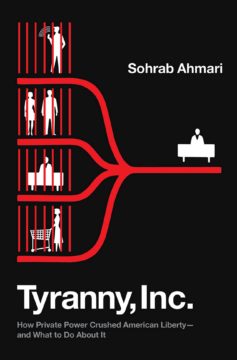by Ed Simon
“Men intoxicated are sometimes stunned into sobriety.” —Lord Mansfield (1769)
 Today marks eight years since I had my last drink. Or maybe yesterday marks that anniversary; I’m not sure. It was that kind of last drink. The kind of last drink that ends with the memory of concrete coming up to meet your head like a pillow, of red and blue lights reflected off the early morning pavement on the bridge near your house, the only sound cricket buzz in the dewy August hours before dawn. The kind of last drink that isn’t necessarily so different from the drink before it, but made only truly exemplary by the fact that there was never a drink after it (at least so far, God willing). My sobriety – as a choice, an identity, a life-raft – is something that those closest to me are aware of, and certainly any reader of my essays will note references to having quit drinking, especially if they’re similarly afflicted and are able to discern the liquor-soaked bread-crumbs that I sprinkle throughout my prose. But I’ve consciously avoided personalizing sobriety too much, out of fear of being a recovery writer, or of having to speak on behalf of a shockingly misunderstood group of people (there is cowardice in that position). Mostly, however, my relative silence is because we tribe of reformed dipsomaniacs are a superstitious lot, and if anything, that’s what keeps me from emphatically declaring my sobriety as such.
Today marks eight years since I had my last drink. Or maybe yesterday marks that anniversary; I’m not sure. It was that kind of last drink. The kind of last drink that ends with the memory of concrete coming up to meet your head like a pillow, of red and blue lights reflected off the early morning pavement on the bridge near your house, the only sound cricket buzz in the dewy August hours before dawn. The kind of last drink that isn’t necessarily so different from the drink before it, but made only truly exemplary by the fact that there was never a drink after it (at least so far, God willing). My sobriety – as a choice, an identity, a life-raft – is something that those closest to me are aware of, and certainly any reader of my essays will note references to having quit drinking, especially if they’re similarly afflicted and are able to discern the liquor-soaked bread-crumbs that I sprinkle throughout my prose. But I’ve consciously avoided personalizing sobriety too much, out of fear of being a recovery writer, or of having to speak on behalf of a shockingly misunderstood group of people (there is cowardice in that position). Mostly, however, my relative silence is because we tribe of reformed dipsomaniacs are a superstitious lot, and if anything, that’s what keeps me from emphatically declaring my sobriety as such.
There are, for sure, certain concerns about propriety that have a tendency to gag these kinds of confessions – I’ve pissed in enough alleyways in three continents that you’d think the having done it would embarrass me more than the declaring of it, but here we are. There’s also, and this took some time to evolve, issues of humility. When I put together strings of sober time in the past, and over a decade and a half I tried to quit drinking thirteen times, with the longest tenure a mere five months, I was loudly and performatively on the wagon. In my experience that’s the sort of sobriety that serves the role of being antechamber to relapse, a pantomime of recovery posited around the sexy question of “Will he or won’t he drink again?” I remember sitting in bars during this time period – I still sat the bar drinking Diet Coke during that stretch – and having the bartender scatter half-empty scotch tumblers filled with iced tea around the bar so that when friends arrive, they’d think I’d started drinking again. Get it?! So, this time around I wanted to avoid the practical jokes, since in the back of my mind I’d already decided that the next visit to the bar wouldn’t necessarily have ice tea in those glasses. Which is only tangentially related to my code of relative silence for the last half-decade – I was scared that the declaration would negate itself, and I’d find myself passed out on my back on that sidewalk again. So, at the risk of challenging those forces that control that wheel of fate, let me introduce myself – my name is Ed and I’m an alcoholic. Read more »




 In Germany they joke that Slavs live in poverty so they can drive home in a Mercedes. I hadn’t heard this stereotype growing up in so-called Australia. From there, we had to fly.
In Germany they joke that Slavs live in poverty so they can drive home in a Mercedes. I hadn’t heard this stereotype growing up in so-called Australia. From there, we had to fly.
 Sometimes words explode. It is a safe bet that, before 2022, you had never even heard the term ‘polycrisis’. Now, there is a very good chance you have run into it; and, if you are engaged in environmental, economic or security issues, you most likely have – you might even have become frustrated with it. First virtually nobody was using polycrisis talk, and suddenly everyone seems
Sometimes words explode. It is a safe bet that, before 2022, you had never even heard the term ‘polycrisis’. Now, there is a very good chance you have run into it; and, if you are engaged in environmental, economic or security issues, you most likely have – you might even have become frustrated with it. First virtually nobody was using polycrisis talk, and suddenly everyone seems  Hiding in plain sight, the largely unexamined crack epidemic of the 1980s and early 1990s has much to teach us about current US drug policy, the blatant racism of drug-related sentencing, and the power of community action. In his important, balanced book
Hiding in plain sight, the largely unexamined crack epidemic of the 1980s and early 1990s has much to teach us about current US drug policy, the blatant racism of drug-related sentencing, and the power of community action. In his important, balanced book  The tiny forest lives atop an old landfill in the city of Cambridge, Mass. Though it is still a baby, it’s already acting quite a bit older than its actual age, which is just shy of 2. Its aspens are growing at twice the speed normally expected, with fragrant sumac and tulip trees racing to catch up. It has absorbed storm water without washing out, suppressed many weeds and stayed lush throughout last year’s drought. The little forest managed all this because of its enriched soil and density, and despite its diminutive size: 1,400 native shrubs and saplings, thriving in an area roughly the size of a basketball court.
The tiny forest lives atop an old landfill in the city of Cambridge, Mass. Though it is still a baby, it’s already acting quite a bit older than its actual age, which is just shy of 2. Its aspens are growing at twice the speed normally expected, with fragrant sumac and tulip trees racing to catch up. It has absorbed storm water without washing out, suppressed many weeds and stayed lush throughout last year’s drought. The little forest managed all this because of its enriched soil and density, and despite its diminutive size: 1,400 native shrubs and saplings, thriving in an area roughly the size of a basketball court.

 Advait Arun in Phenomenal World:
Advait Arun in Phenomenal World: Greg Conti in Compact Magazine:
Greg Conti in Compact Magazine: Jodi Dean in LA Review of Books:
Jodi Dean in LA Review of Books: D
D Two pages into his new biography of Harry Smith, the enigmatic anthropologist, underground filmmaker, painter and music collector responsible for the influential “
Two pages into his new biography of Harry Smith, the enigmatic anthropologist, underground filmmaker, painter and music collector responsible for the influential “